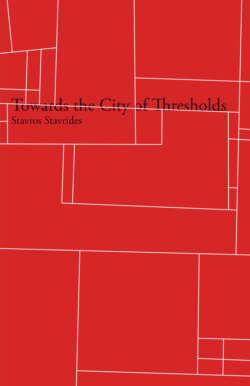Читать книгу Towards the City of Thresholds - Stavros Stavrides - Страница 10
На сайте Литреса книга снята с продажи.
Introduction: spatiotemporal thresholds and the experience of otherness
ОглавлениеWhile attempting to consider the role space has in the potential emancipatory transformation of society, radical thinking and action tend to take for granted that space contains, delimits, and thus identifies social life. Spaces of emancipation are mostly envisaged either as freed strongholds to be defended or as enclaves of otherness. It is important, however, to think of space not as a container of society but as a formative element of social practices. Imagining a different future means trying to experience and conceptualize spatialities that may help create different social relations.
People experience space but also think through space and imagine through space. Space not only gives form to the existing social world (experienced and understood as a meaningful life condition), but also to possible social worlds that may inspire action and express collective dreams.
Seeking to explore, then, the ways space is potentially connected to processes of emancipation we cannot be satisfied with the discovery of alleged “spaces of emancipation.” If emancipation is a process, it has to generate dynamic transformations and not simply institute defined areas of freedom. Spatial characteristics rather than concrete spaces become the focus of such an exploration. It is exactly at this level that the idea of threshold emerges to convey the spatial dynamics of emancipation. As will be shown, thresholds mark and give meaning to the act of crossing as productive of change.
This book’s main argument is that emancipatory spatiality emerges in the creation and social use of thresholds. Social struggles and movements are greatly influenced by the formative potentialities of thresholds. Fragments of a different life, experienced during the struggle, take form in spaces and times with threshold characteristics. When people collectively realize that their actions are becoming different from their usual collective habits, then encountering boundaries becomes liberating.
It is in everyday encounters with otherness that people develop an art of negotiation based on the collective creation of in-between spaces, i.e., thresholds. During periods of liberating change, this art is practiced to its maximum potentiality. Struggles that implicitly or explicitly aim at changes in common life may merely create temporary enclaves of otherness. However, otherness may also be experienced as the inhabiting of in-between spaces and times, i.e., thresholds. In a self-organizing neighborhood these spaces and times are created in assemblies, demonstrations, or common meals. In a rebellious Zapatista municipality, thresholds become the means to invent new tactics of collective self-determination.
Encountering otherness can be potentially liberating as long as it invents passages from self to other. This means approaching otherness as a process rather than a state. Movements need to investigate an “art of doing” that helps people discover, create, and appreciate otherness. We can think of the city of thresholds as the always-emergent work of a collective effort to create a liberating future. An emancipated “public culture” will hopefully be created out of these thresholds to otherness, bonds of solidarity, and new forms of common life.
